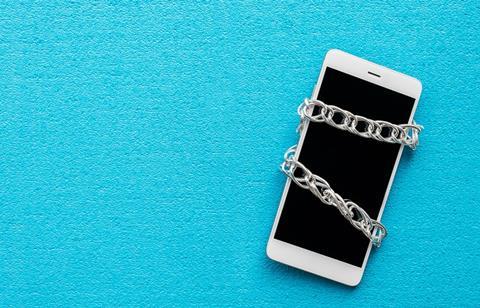
Need to know:
- Technology facilitates a more flexible work culture but, if not managed properly, an always-on environment can lead to physical and mental health issues.
- Drastic techniques, such as blanket bans and even legislation, have grown in popularity, but senior managers have a key role to play in setting everyday expectations.
- Technology can also be used for good, such as supporting mental health and wellbeing with mindfulness and meditation apps.
Technology has created the ability to work whenever and wherever. This is a great enabler, giving many employees the flexibility to strike the perfect work-life balance. However, ensuring this remains a benefit and not a health risk is no less difficult for organisations than it is essential.
In an always-on culture, where responding to emails outside of normal working hours or while on holiday is the norm, employee health can suffer dire consequences. As well as causing anxiety and stress, this can also have adverse effects on sleep and relationships.
Kim Horsfall, senior consultant at Howden Employee Benefits and Wellbeing, says:“If employees feel they can’t switch off, it can take its toll on their physical and mental health. As well as exacerbating any existing health issues, it can lead to burnout.”
Being tied to a screen may also have more long-term implications, says Karen Matovu, head of mental health training at Validium. “When someone is constantly distracted by technology, they don’t use parts of the brain that build longer-term memory. Nobody knows how this will affect people when they’re older, but it’s a worrying trend.”
Switching off
With so much at stake, developing a policy that ensures employees have proper downtime is a must.
Several employers have already taken drastic steps in this regard. Volkswagen, for example, bans emails between 6.15pm and 7am, while at Daimler, employees can choose to have incoming emails deleted while they are on holiday.
Governments have also placed reducing digital stressors high on the agenda. In France, as of 2017, employees have a legislated right to disconnect from work-related technology outside of working hours.
The French approach, and that of organisations such as Volkswagen, may send out a strong message, but it may not be the right journey in many circumstances, says Rachel Suff, employee relations adviser at the Chartered Institute of Personnel and Development (CIPD).
“It’s too prescriptive,” she explains. “If someone wants to work flexibly, a blanket ban is counterproductive. Employers need to find ways to create a culture where employees can get the downtime they need.”
For instance, employers could include a disclaimer on emails stating that a response is not expected outside of normal working hours, says Suff. “It sends out an important message to staff. Senior managers have a key role to play in creating the right culture and expectations. It should be part of their training.”
Matovu adds: “Employers need to create a culture where boundary setting is encouraged. To do this, they must get the key influencers on board and talking about what’s possible, especially as more technology, such as artificial intelligence [AI], is introduced in to the workplace.”
Good practice
The National Forum for Health and Wellbeing at Work has created a set of guidelines to help employers set the right digital expectations for their staff, providing suggestions around the use of email generally, as well as recommendations for those looking into implementing timed email bans.
Sir Cary Cooper, professor of organisational psychology and health at Manchester Business School and one of the founders of the forum, says that the specifics will depend on the workplace; nevertheless, there are some core recommendations surrounding email etiquette employers should be aware of.
“Only copy in people who are relevant, and don’t send emails in the office; it’s much more efficient, and healthier, to walk to [the person’s] desk and talk to them,” he says. “With an email, it’s often necessary to get clarification, which takes no time when it’s face-to-face. And never do anything problematic, such as discipline, by email.”
A more effective use of technology can also help to reduce the prevalence of digital stressors. “A delay can be put on an email, so it doesn’t get sent until working hours, or an employer can turn employees’ devices off,” explains Horsfall.
Employees’ mental health may also benefit from an overhaul of working practices. For example, employers could consider introducing ‘golden time’, during which there are no distractions. “Working for one hour then spending 10 minutes looking at email is much more effective,” says Matovu. “This allows more to be achieved, especially as so many emails are resolved within that timeframe.”
Health and wellbeing
In addition to creating an underlying culture that minimises digital stressors, organisations can implement a health and wellbeing framework to support staff. This can often include harnessing the digital, phone-fixated culture for good, by providing digital routes to support.
“Running through a mindfulness or guided meditation session on an app can help an employee de-stress and sleep better,” explains Horsfall. “It’s an easy way to access self-improvement techniques instantly.”
Technology can also be used to schedule breaks and activities such as yoga or a walk outside, which can help employees unwind and switch off.
By combining this with appropriate policies, good practice and management support, the concept of technology as a source of stress in the workplace may only be short-lived.
“Organisations and employees need to manage technology, not the other way around,” Cooper concludes. “Taking control now will ensure the UK avoids restrictive legislation, and is able to use technology to support flexible working.”
Read more...
AGY47 encourages employees to switch off outside work
Dr Gail Kinman: Downtime is essential for employee health and productivity
















